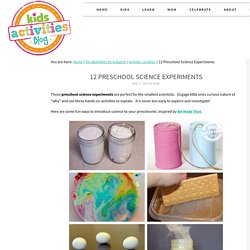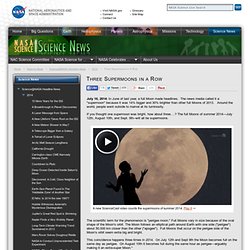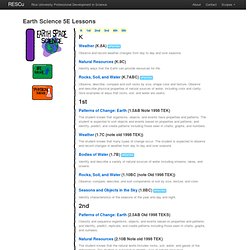

Inquiry Skills - Science Investigation & Analysis Rap Video Preview. New Technology, Science News, The Future Now. Mark Your Calendars: In A Year, We'll Arrive At Pluto. Hide captionAn artist's concept shows the New Horizons spacecraft as it approaches Pluto and its largest moon, Charon, in July 2015.

Johns Hopkins University Applied Physics Laboratory/Southwest Research Institute An artist's concept shows the New Horizons spacecraft as it approaches Pluto and its largest moon, Charon, in July 2015. Planetary scientist Alan Stern is counting down the days — just 365 of them now. He has spent the past 8 1/2 years waiting for the New Horizons spacecraft to make a close encounter with Pluto.
Next year, on July 14, the spacecraft will reach its destination. "Not only did we choose the date, by the way, we chose the hour and the minute. In January 2006, the New Horizons spacecraft left Earth on the 3-billion-mile journey to Pluto and beyond. "We're arriving at Pluto on the morning of the 14th of July 2015," Stern says.
Sixth-Grader's Science Fair Finding Shocks Ecologists. Hide captionLauren Arrington's sixth-grade research project is cited in a science journal.

Courtesy of Lauren Arrington Lauren Arrington's sixth-grade research project is cited in a science journal. When 12-year-old Lauren Arrington heard about her sixth-grade science project, she knew she wanted to study lionfish. Tyler DeWitt. Lesson Plan Format: 5E Instructional Model. The information below is also available in: What is a 5E instructional model?

This model describes a teaching sequence that can be used for entire programs, specific units and individual lessons. Energy4me lesson plans support the 5E constructivist learning cycle, helping students build their own understanding from experiences and new ideas. The 5Es represent the five stages of a sequence for teaching and learning: Engage, Explore, Explain, Elaboration and Evaluate. The 5E model was developed by The Biological Science Curriculum Study (BSCS). Pique students’ interest and get them personally involved in the lesson while pre-assessing prior understanding.
Get students involved in the topic so they can develop their own understanding. Provide students with an opportunity to communicate what they have learned and figure out what it means. Allow students to use their new knowledge and continue to develop a deeper and broader understanding. Order Matters: Using the 5E Model to Align Teaching with How People Learn. Pathogens On A Plane: How To Stay Healthy In Flight : Goats and Soda. Hide captionSuspicious travel companions: Bacteria can survive for days on surfaces inside a plane.

But that doesn't mean you have to take these critters home with you. Benjamin Arthur for NPR Suspicious travel companions: Bacteria can survive for days on surfaces inside a plane. Bookmarks of tspence. Teach Science Right - Blog. Lightning map USA, Canada – thunderstorms and lightning strikes. 12 Preschool Science Experiments. These preschool science experiments are perfect for the smallest scientists.

Engage little ones curious nature of “why” and use these hands on activities to explain. It is never too early to explore and investigate! Here are some fun ways to introduce science to your preschooler, inspired by We Made That. Affiliate links below If you’re looking for a fun, ready to play, box of science for your kids, check out the Color of Science kit from Kiwi Crate – we LOVE it! Water Math & Science Activities for Kids Ages 3-6. Three Supermoons in a Row. Three Supermoons in a Row July 10, 2014: In June of last year, a full Moon made headlines.

The news media called it a "supermoon" because it was 14% bigger and 30% brighter than other full Moons of 2013. Around the world, people went outside to marvel at its luminosity. If you thought one supermoon was bright, how about three….? The full Moons of summer 2014—July 12th, August 10th, and Sept. 9th--will all be supermoons. The scientific term for the phenomenon is "perigee moon. " This coincidence happens three times in 2014. Microsoft Word - PDF Version NAD Science Curriculum Guide 2008 final.doc - 730_sciencek8.pdf. Inspire Her Mind. Science There's a young 4-year old girl shuffling through a chest full of various dress-up clothes.

The copy asks: Does dress-up determine her future? Scroll to the left, and the girl picks up a princess dress from the chest. Hurricane Katrina. Free Online Textbooks, Flashcards, Practice, Real World Examples, Simulations. Interactive Whiteboard Resources. Earth Science 5E Lessons. Weather (K.8A) Updated Observe and record weather changes from day to day and over seasons.

Natural Resources (K.9C) Identify ways that the Earth can provide resources for life. Rocks, Soil, and Water (K.7ABC) Updated Observe, describe, compare and sort rocks by size, shape color and texture. 1st Patterns of Change: Earth (1.5AB Note 1998 TEK) The student knows that organisms, objects, and events have properties and patterns. Weather (1.7C (note old 1998 TEK)) The student knows that many types of change occur.